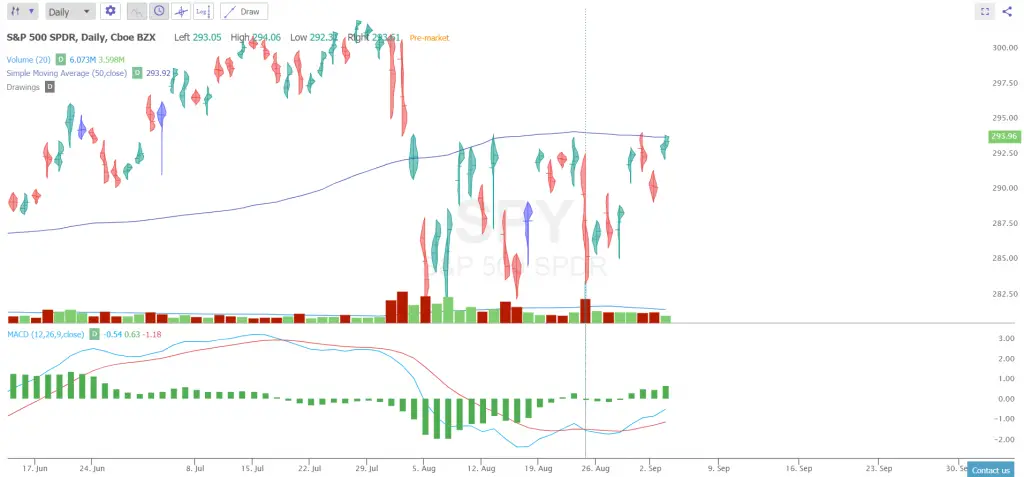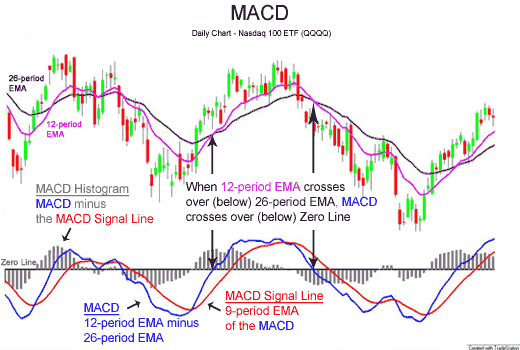The MACD (Pronounced Mac-Dee), is short for moving average convergence/divergence, it is a technical trading indicator used in technical analysis to filter and trade price action. It was created by Gerald Appel in the late 1970s as a new tool for technical analysts. It is designed to reveal changes in price strength, direction, momentum, and duration for trends and swings.
The MACD is one of the most simple visual momentum indicators. The MACD takes two moving averages that are trend following indicators and creates a momentum oscillator by subtracting the longer term moving average from the shorter term moving average. This formula creates the MACD and a dual indicator for both trend identification and momentum. The MACD lines fluctuates both above and below the zero line on the Histogram as the moving averages come together, crossover, and separate. Traders can wait for signal line crossovers, center line crosses, and divergences as potential trading signals. The MACD is not bounded inside set parameters so it’s not a good tool for identifying extended overbought of oversold levels.
The MACD is calculated by subtracting the 26-period Exponential Moving Average from the 12-period EMA. The answer for the calculation is the MACD line. A nine-day EMA of the MACD is called the signal line. This faster signal line is then placed with the MACD line, and can act as a crossover trigger for buy and sell signals in the direction of the price move to capture trends or swings. Many traders may use it as a buy signal when the stock shows the MACD crossing above its signal line and then lock in profits or at times sell short the stock when the MACD crosses below the signal line. The MACD indicator can be used in many ways, but it is usually used for crossovers and divergences to create signals.
The bullish signal line MACD crossover can show momentum and a possible swing higher in price than can evolve into a sustained trend. A bullish crossover can happen near a price bottom after a rally off the lows or when price emerges out of a price range. A bearish MACD bearish signal line cross under can show a the loss of momentum early when a trend turns into a range and fails to make new highs. A bearish MACD cross under can also signal the beginning of a downtrend and the end of an uptrend. The MACD works best when used with other technical indicators for confirmation. For example, if you use MACD crosses to get into a trade you could use the Relative Strength Index (RSI) to exit and lock in gains as a chart become overbought (70 RSI zone) or oversold (30 RSI zone).
Image via Wikipedia.

Chart Courtesy of TrendSpider.com
